When LAPD received a call about a rented chain saw which had been returned with what appeared to be pieces of human flesh and flecks of blood in the teeth and motor, they turned the information over to the L.A. County Sheriff’s Department. The Sheriffs were investigating the murder of a John Doe whose body parts had been found off the interstate in Santa Clarita and as possibly as far north as Madera County. The victim had yet to be identified but he was thought to have been a young man, likely in his teens, sporting a punk rocker hair cut.
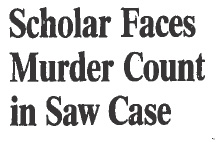 One of the first things that Sheriff’s detectives needed to do was to identify the person who had rented the chain saw. It turned out to be surprisingly easy. The saw had been rented by a Fresno State College professor, Max Bernard Franc, in his own name. Characterized by colleagues as gentle and non-confrontational, Max didn’t seem to be capable of a cross word let alone a grisly dismemberment killing. But the undeniable evidence of the chain saw was sufficient for detectives to book him on suspicion of murder. He was remanded into custody and held without bail.
One of the first things that Sheriff’s detectives needed to do was to identify the person who had rented the chain saw. It turned out to be surprisingly easy. The saw had been rented by a Fresno State College professor, Max Bernard Franc, in his own name. Characterized by colleagues as gentle and non-confrontational, Max didn’t seem to be capable of a cross word let alone a grisly dismemberment killing. But the undeniable evidence of the chain saw was sufficient for detectives to book him on suspicion of murder. He was remanded into custody and held without bail.
While efforts were being made to identify the victim, detectives in both Los Angeles and Madera counties searched both of Max’s residences–his house in Fresno and his apartment in West Hollywood. Sergeant Bryan Williams, an L.A. County Sheriff’s investigator, traveled to Fresno to take part in the search. Williams later told reporters that he had found “one of the largest collections of pornographic homosexual films ever seen.” The link between the quiet college professor and the young punk rocker was becoming a  little easier to fathom. All indications were that Max had been leading a double life for years.
little easier to fathom. All indications were that Max had been leading a double life for years.
The Fresno Bee reported that Max had claimed that the chain saw was bloody because he had run over a dog and then used the saw to cut up the carcass. What? Who in the hell does that? According to Officer George Collier of the LAPD, when he first heard Max’s explanation he was skeptical; but when he was asked if he thought it was unusual for someone to report cutting up a dog with a chain saw he replied: “It’s not the normal type of thing a person would do, but Hollywood’s a bizarre place.” When the dead dog story failed to sway the police Max did what many people accused of murder do–he blamed someone else.
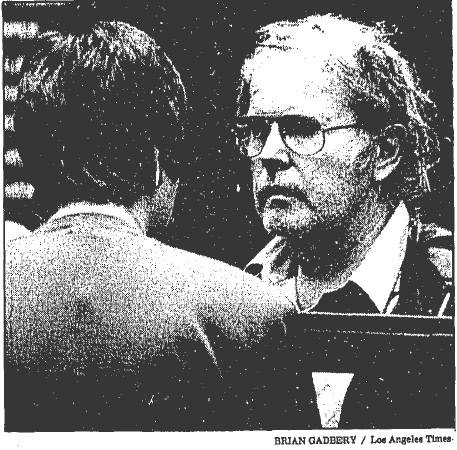 Max told Sheriff’s investigator Steve Lee that the still unidentified victim had been killed by a male prostitute, Terry Adams, in self-defense. The cause of death was a gunshot wound to the head and allegedly Terry and the victim had argued over a debt. He described Terry as a white male in his 30s, about 5’10”, 160 pounds with shoulder length blond hair. Detectives were just as doubtful about Terry’s existence as they had been about the dead dog. L.A. County Deputy D.A. Sterling Norris said: “At this time we are still of the opinion that there was not a second man, but we’re still investigating.”
Max told Sheriff’s investigator Steve Lee that the still unidentified victim had been killed by a male prostitute, Terry Adams, in self-defense. The cause of death was a gunshot wound to the head and allegedly Terry and the victim had argued over a debt. He described Terry as a white male in his 30s, about 5’10”, 160 pounds with shoulder length blond hair. Detectives were just as doubtful about Terry’s existence as they had been about the dead dog. L.A. County Deputy D.A. Sterling Norris said: “At this time we are still of the opinion that there was not a second man, but we’re still investigating.”

Max in high school. Class of 1947
While Max sat in jail and attempted to talk his way out of the murder charge, investigators succeeded in identifying the victim as an 18-year-old wannabe actor from Kansas City, Tracy Leroy Nute. The D.A.’s office was going forward with the case against Max offering “homosexual rage” as the motive and, citing the “depraved nature of the killing” ,they were seeking the death penalty for Max.
Before you dismiss homosexual rage entirely, note that it is defined in the Urban Dictionary as: “A temper tantrum observed in homosexual men who exhibit behavior of a female coupled with the strength of a man. Such deadly pairing is particularly worrisome given that crimes, such as assault and/or murder committed in a gay rage usually reveal a gory and violent confrontation above normal levels (i.e. excessive bruising, multiple gunshot or stabbing wounds.)
It was a nifty prosecution theory that managed to stereotype both women and gay males.
The trial was going to be very interesting.
NEXT TIME: The conclusion of Max’s story.

 Fifty-year-old Max Bernard Franc was a tenured professor of public administration at the California State University at Fresno. The unmarried Wisconsin native had earned his Ph.D. at New York University. He’d joined the Fresno faculty in 1969. His colleagues knew him as quiet and scholarly, so you can imagine their shock when he was arrested in Hollywood for the murder and dismemberment of the young man whose body parts had been found scattered along highways between Los Angeles and Fresno.
Fifty-year-old Max Bernard Franc was a tenured professor of public administration at the California State University at Fresno. The unmarried Wisconsin native had earned his Ph.D. at New York University. He’d joined the Fresno faculty in 1969. His colleagues knew him as quiet and scholarly, so you can imagine their shock when he was arrested in Hollywood for the murder and dismemberment of the young man whose body parts had been found scattered along highways between Los Angeles and Fresno.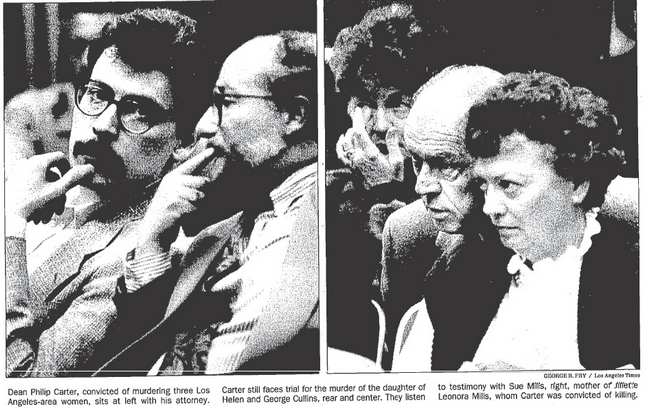 For over five hours Carter forced the woman at knife-point to orally copulate him three times and then he vaginally raped her once. Twice he choked her into unconsciousness. Once because she tried to escape, and the second time because she attempted to scream for help. When he took her car keys she feared that he would take her somewhere and kill her. She testified: “I took hold of his face and I talked to him. I told him to try to remember what he was doing and who he was and who I was and that he didn’t have to do this. . .I was trying to reason with him.” She also tried to keep him off-balance. After the final sexual assault she hugged him, told him he was “beautiful”, and then casually got up and began to dress for work.She gave him directions to the bus station and, unbelievably, he left.
For over five hours Carter forced the woman at knife-point to orally copulate him three times and then he vaginally raped her once. Twice he choked her into unconsciousness. Once because she tried to escape, and the second time because she attempted to scream for help. When he took her car keys she feared that he would take her somewhere and kill her. She testified: “I took hold of his face and I talked to him. I told him to try to remember what he was doing and who he was and who I was and that he didn’t have to do this. . .I was trying to reason with him.” She also tried to keep him off-balance. After the final sexual assault she hugged him, told him he was “beautiful”, and then casually got up and began to dress for work.She gave him directions to the bus station and, unbelievably, he left.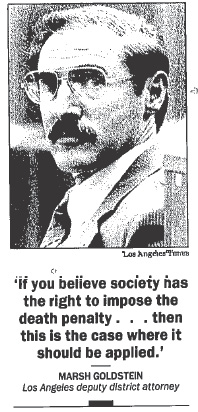
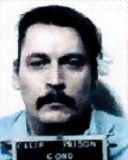 Following Carter’s sentencing the woman he had raped in Ventura County wrote a first person account of her attack for the L.A. Times–it was gut wrenching. She had survived the attack, but for the next seven years she was called to testify against Carter. Each time she had to re-live the events of that night.
Following Carter’s sentencing the woman he had raped in Ventura County wrote a first person account of her attack for the L.A. Times–it was gut wrenching. She had survived the attack, but for the next seven years she was called to testify against Carter. Each time she had to re-live the events of that night.
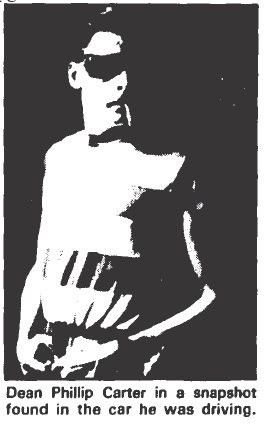 As if Carter wasn’t already in enough trouble, Seattle’s Green River Task Force was interested in him. The task force was attempting to solve the slayings of 25 young women that had started two years earlier. Seattle detectives were able to clear Carter of any involvement in the serial killings in their city.
As if Carter wasn’t already in enough trouble, Seattle’s Green River Task Force was interested in him. The task force was attempting to solve the slayings of 25 young women that had started two years earlier. Seattle detectives were able to clear Carter of any involvement in the serial killings in their city.
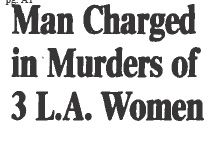 With Carter the prime suspect in the murders reporters and detectives started digging into his background. He hailed from Nome, Alaska where he spent a troubled childhood. He never knew his birthfather but was was adopted by his stepfather (deceased at the time of the slayings) who was Nome’s Chief of Police. Police. If his stepfather tried to be a good influence on the boy, he failed. When he was 12 Carter was declared to be a delinquent child and sent to a youth camp, from which he attempted to escape at least three times. He was ultimately placed in a foster home. As an adult he spent time in an Oregon prison for grand theft auto and possession of cocaine, and in Alaska for burglary.
With Carter the prime suspect in the murders reporters and detectives started digging into his background. He hailed from Nome, Alaska where he spent a troubled childhood. He never knew his birthfather but was was adopted by his stepfather (deceased at the time of the slayings) who was Nome’s Chief of Police. Police. If his stepfather tried to be a good influence on the boy, he failed. When he was 12 Carter was declared to be a delinquent child and sent to a youth camp, from which he attempted to escape at least three times. He was ultimately placed in a foster home. As an adult he spent time in an Oregon prison for grand theft auto and possession of cocaine, and in Alaska for burglary.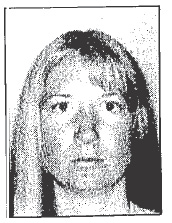
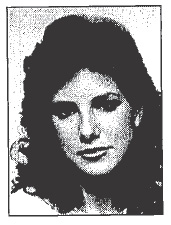
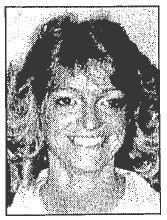
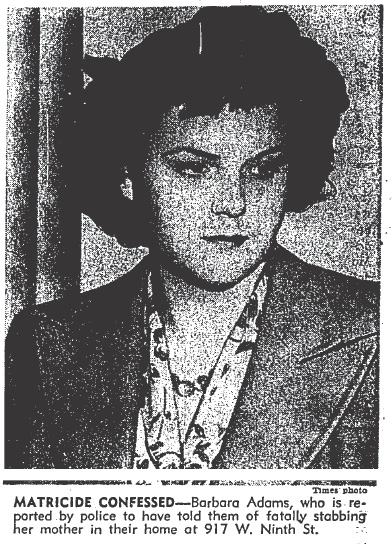
 Detective Thad Brown, of LAPD’s Homicide Detail, accompanied by Juvenile Officer L.M. Simmons, questioned Barbara. She told them about the knife, the canaries and gave them an account of the murder. She was taken to the hospital room at Juvenile Hall where she was admitted under an alias. She spent the day reading magazines. She had two roommates, but she didn’t say a word about why she was there.
Detective Thad Brown, of LAPD’s Homicide Detail, accompanied by Juvenile Officer L.M. Simmons, questioned Barbara. She told them about the knife, the canaries and gave them an account of the murder. She was taken to the hospital room at Juvenile Hall where she was admitted under an alias. She spent the day reading magazines. She had two roommates, but she didn’t say a word about why she was there.
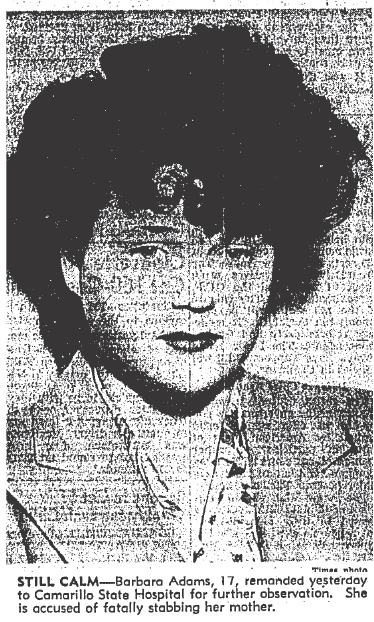 The Rogers went above and beyond. They arranged to have Barbara enrolled in Beverly Hills grade school with their daughter. The two girls later attended the Carthay Center Elementary School together.
The Rogers went above and beyond. They arranged to have Barbara enrolled in Beverly Hills grade school with their daughter. The two girls later attended the Carthay Center Elementary School together.
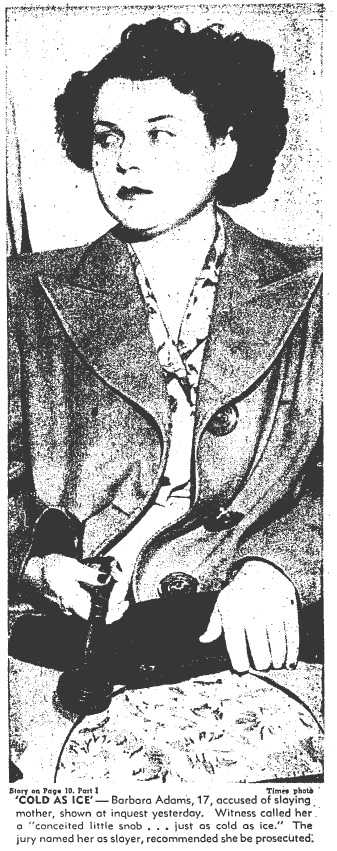
 In late June 1977, Sheriff’s officers announced that they were seeking Patrick W. Kearney, 38, and David D. Hill, 34, formerly of Redondo Beach, as suspects in the sex murders of 8 young men. Investigators said that they had found evidence near the body of John Otis LaMay that lead them to issue warrants for the two men–but they wouldn’t reveal what it was they had found.
In late June 1977, Sheriff’s officers announced that they were seeking Patrick W. Kearney, 38, and David D. Hill, 34, formerly of Redondo Beach, as suspects in the sex murders of 8 young men. Investigators said that they had found evidence near the body of John Otis LaMay that lead them to issue warrants for the two men–but they wouldn’t reveal what it was they had found. The victims tentatively linked to the wanted men ranged in age from 12 to 24–none were as young as 5-year-old Ronnie Dean Smith, who had been dead for nearly 3 years. Maybe the detectives were mistaken in their earlier hunch that the boy’s slaying was connected to the others.
The victims tentatively linked to the wanted men ranged in age from 12 to 24–none were as young as 5-year-old Ronnie Dean Smith, who had been dead for nearly 3 years. Maybe the detectives were mistaken in their earlier hunch that the boy’s slaying was connected to the others.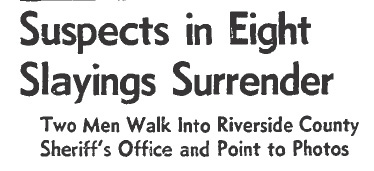
 David Hill’s mother, Edna, was interviewed in her hometown of Lubbock, Texas: “My David would do anything like that. I know the Lord’s going to help. He’ll take care of him.”
David Hill’s mother, Edna, was interviewed in her hometown of Lubbock, Texas: “My David would do anything like that. I know the Lord’s going to help. He’ll take care of him.”
 Seven days after his disappearance his mother, 22-year-old Joann O’Connor (she and Ronnie’s father were divorced) talked to the press in the squad room of the Sheriff’s station.
Seven days after his disappearance his mother, 22-year-old Joann O’Connor (she and Ronnie’s father were divorced) talked to the press in the squad room of the Sheriff’s station.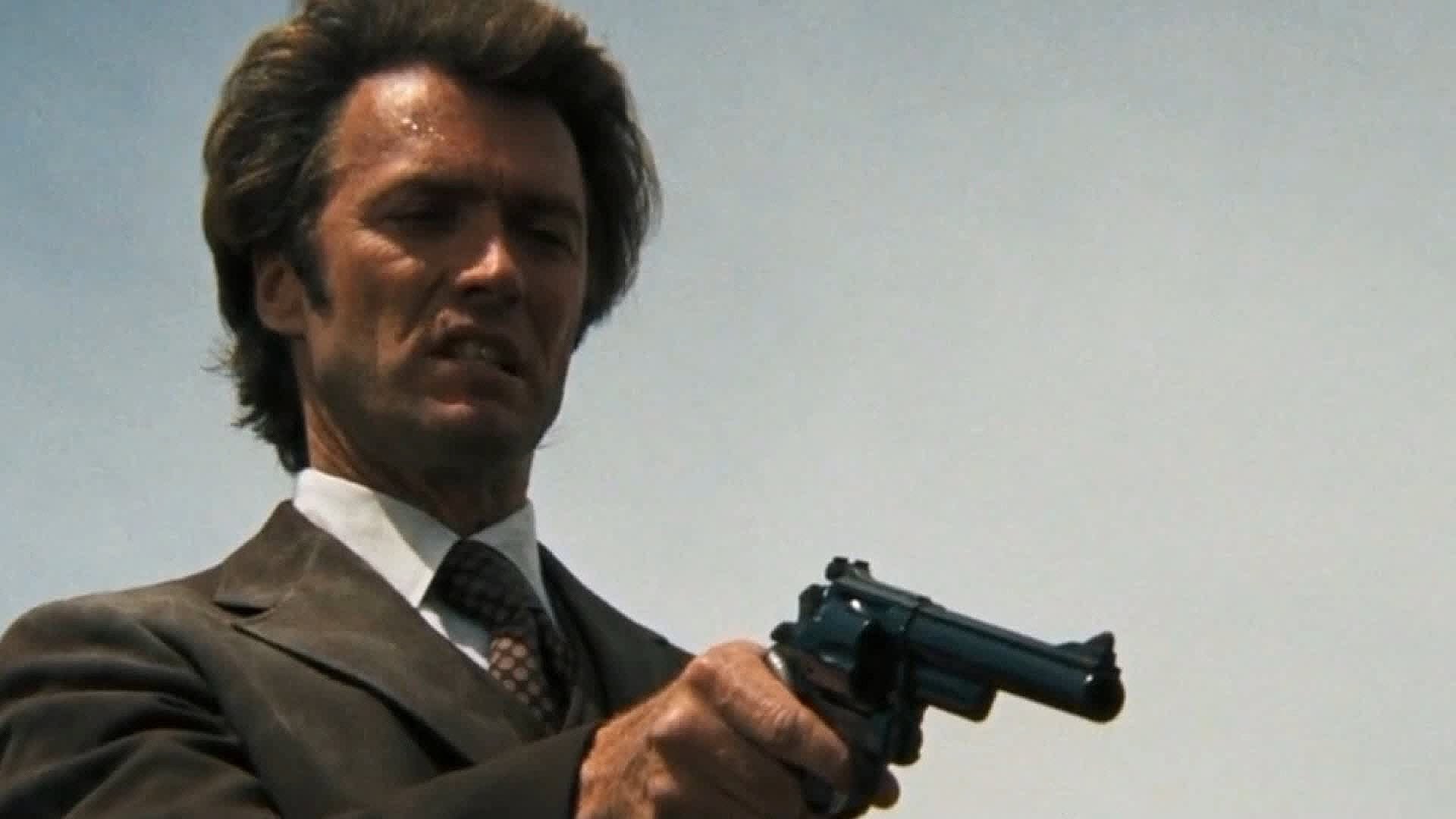
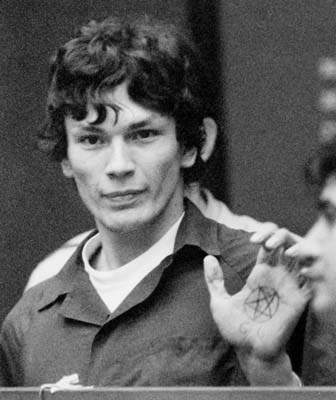
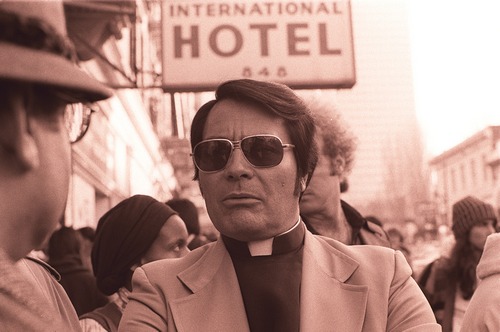
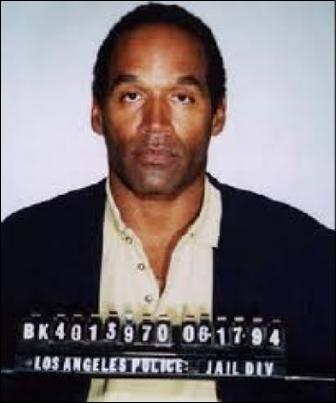 Here in L.A. there was the murder trial of O.J. Simpson, the so-called Trial of the Century. If you remove fame, wealth, and race and reduce the crime to its basic elements you end up with nothing more than a tragic domestic homicide–the type of crime which is altogether too common everywhere–yet the case continues to fascinate.
Here in L.A. there was the murder trial of O.J. Simpson, the so-called Trial of the Century. If you remove fame, wealth, and race and reduce the crime to its basic elements you end up with nothing more than a tragic domestic homicide–the type of crime which is altogether too common everywhere–yet the case continues to fascinate.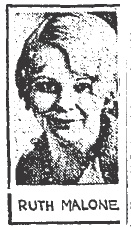 By December 1927 twenty-three-year-old Ruth Malone had been in Los Angeles for about 4 months. She’d fled Aberdeen, Washington to escape her husband John, a jealous and violent drunk. She used her mother’s address at 244 North Belmont Avenue, but lived with a girl friend in an apartment at 9th and Flower. She kept the address of the apartment a secret just in case John tried to find her. She worked half a mile from the apartment at a drug store on East Twelfth between Santee Street and Maple Avenue. Ruth had spent the last few months seriously contemplating divorce but she wasn’t in any hurry to confront John.
By December 1927 twenty-three-year-old Ruth Malone had been in Los Angeles for about 4 months. She’d fled Aberdeen, Washington to escape her husband John, a jealous and violent drunk. She used her mother’s address at 244 North Belmont Avenue, but lived with a girl friend in an apartment at 9th and Flower. She kept the address of the apartment a secret just in case John tried to find her. She worked half a mile from the apartment at a drug store on East Twelfth between Santee Street and Maple Avenue. Ruth had spent the last few months seriously contemplating divorce but she wasn’t in any hurry to confront John.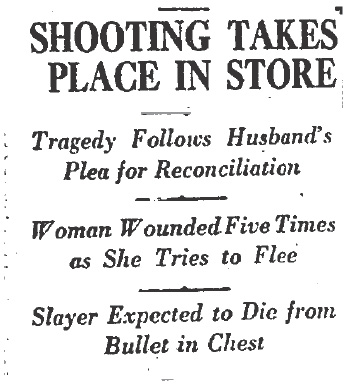
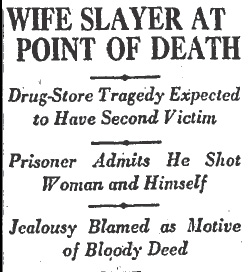 Investigators learned that John was 29-years-old and that he had an arrest record. He’d been busted in Oakland on October 10, 1917 on a burglary charge and later in San Francisco for violation of the State Poison Act (a drug charge). John had been in Los Angeles for a few weeks. He was staying at a hotel just a few blocks away from Ruth’s workplace.
Investigators learned that John was 29-years-old and that he had an arrest record. He’d been busted in Oakland on October 10, 1917 on a burglary charge and later in San Francisco for violation of the State Poison Act (a drug charge). John had been in Los Angeles for a few weeks. He was staying at a hotel just a few blocks away from Ruth’s workplace. On March 20, 1928 John and several other death row inmates welcomed a newcomer to their ranks, William Edward Hickman. Hickman, who had given himself the nickname “The Fox” had been sentenced to death for the brutal mutilation murder of 12-year-old Marion Parker, a crime he had committed only ten days after John had killed Ruth. The two dead men walking had met in the Los Angeles County Jail while each was awaiting trial. John cornered Hickman on one occasion and blamed him for inciting the public to a renewed interest in capital punishment–resulting in his own date with the hangman.
On March 20, 1928 John and several other death row inmates welcomed a newcomer to their ranks, William Edward Hickman. Hickman, who had given himself the nickname “The Fox” had been sentenced to death for the brutal mutilation murder of 12-year-old Marion Parker, a crime he had committed only ten days after John had killed Ruth. The two dead men walking had met in the Los Angeles County Jail while each was awaiting trial. John cornered Hickman on one occasion and blamed him for inciting the public to a renewed interest in capital punishment–resulting in his own date with the hangman.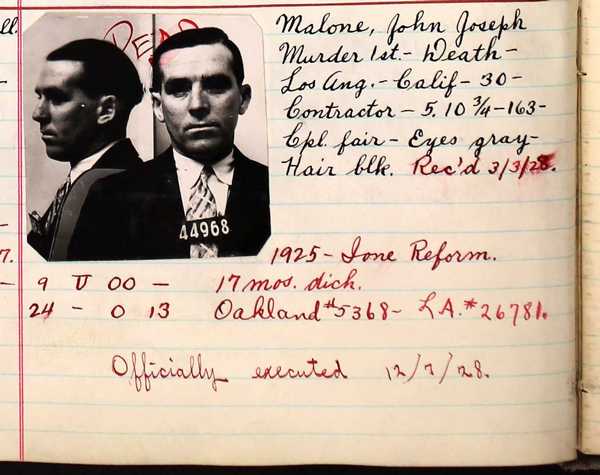 John’s sentence was automatically appealed but the State Supreme Court upheld the death penalty. Judge Fricke re-sentenced John to hang. Unless something changed he would meet his end on December 7, exactly one year to the day since Ruth’s murder. John had evidently changed his mind about dying since his suicide attempt because he was part of a Thanksgiving escape plot that failed. To prevent him from any further attempts to tunnel out of San Quentin he was moved to the death cell.
John’s sentence was automatically appealed but the State Supreme Court upheld the death penalty. Judge Fricke re-sentenced John to hang. Unless something changed he would meet his end on December 7, exactly one year to the day since Ruth’s murder. John had evidently changed his mind about dying since his suicide attempt because he was part of a Thanksgiving escape plot that failed. To prevent him from any further attempts to tunnel out of San Quentin he was moved to the death cell.